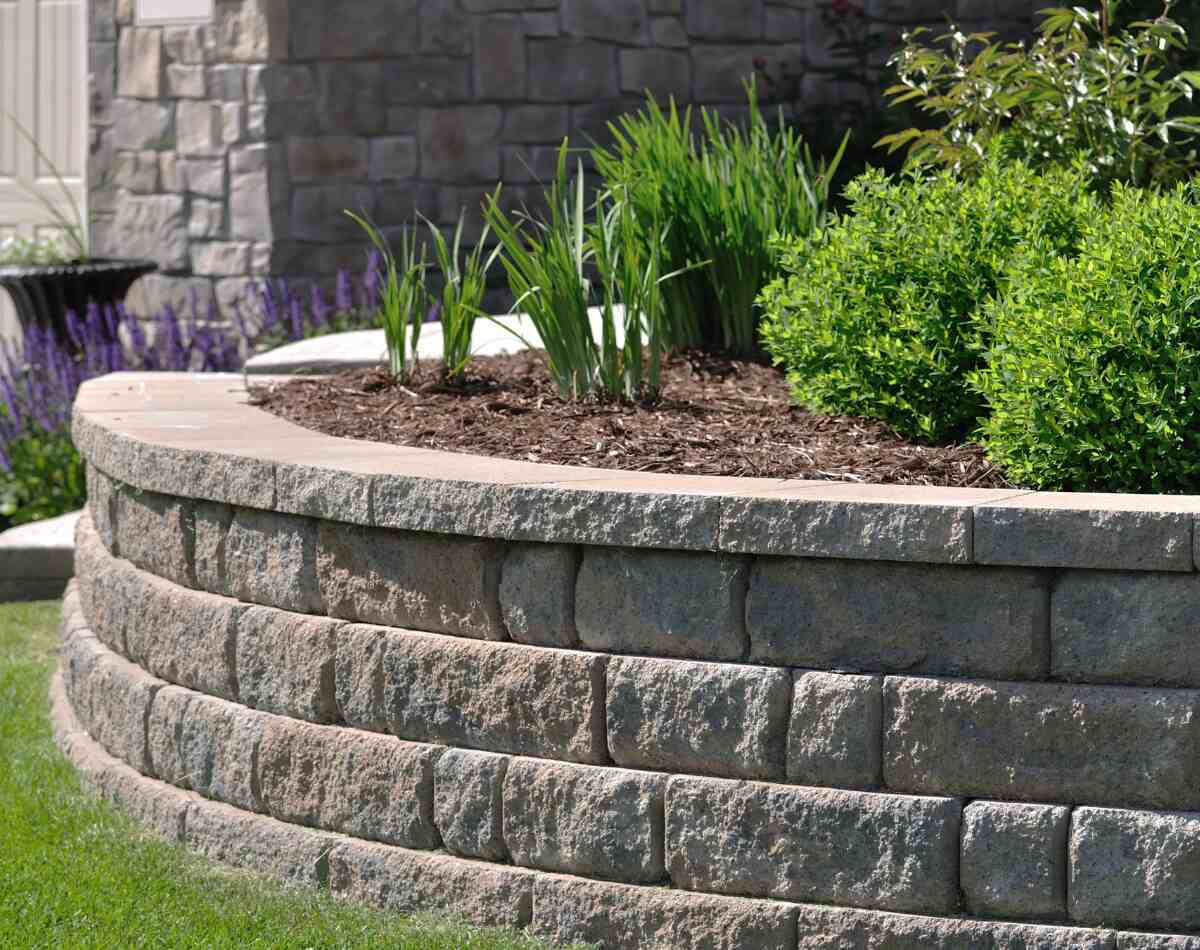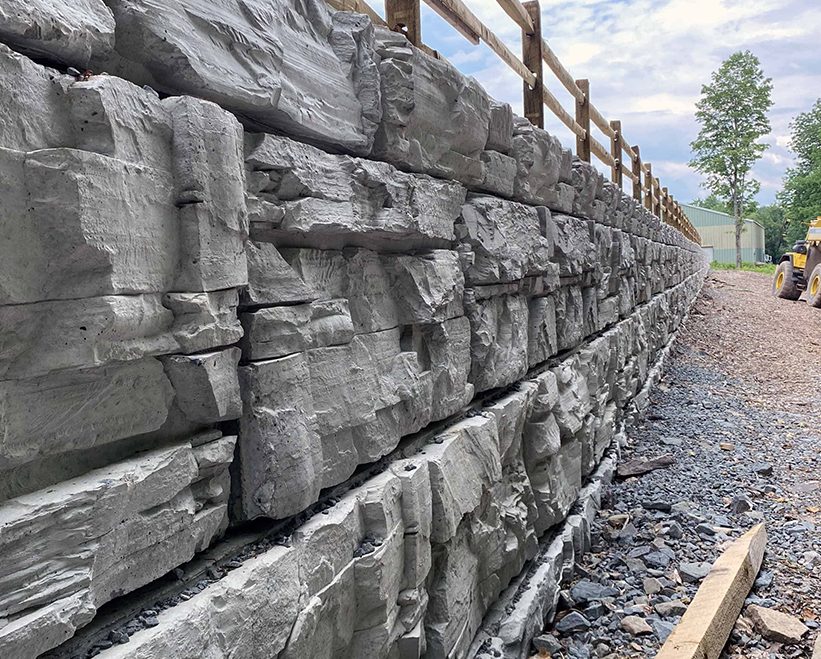Planning OKC Precision Retaining Walls that enhance your outdoor space
Planning OKC Precision Retaining Walls that enhance your outdoor space
Blog Article
Secret Factors To Consider for Building Effective Retaining Walls in Your Yard
When you're taking into consideration constructing a maintaining wall in your backyard, it's important to assume about numerous crucial elements. The wall surface's purpose, the materials you'll make use of, and the specific dirt problems can all affect its performance and long life.
Comprehending the Function of Your Retaining Wall
When you consider building a keeping wall, consider its primary objective: stabilizing soil and stopping disintegration. Retaining walls give important support for sloped landscapes, aiding to keep soil integrity. You'll find they're vital in areas where water overflow may or else get rid of dirt, causing expensive fixings and landscape damages.
By holding back planet, these walls develop level surface areas for yards, patios, or pathways. This not just boosts your lawn's looks yet also advertises better drain, decreasing water pooling in unwanted locations. If you're taking care of high slopes, a well-constructed retaining wall can prevent landslides, making certain safety and security for you and your property.
Eventually, understanding the objective of your retaining wall will certainly direct your layout decisions and aid you produce a practical, resilient structure that satisfies your demands. So, take a minute to assess your landscape; it'll pay off over time.
Picking the Right Materials
When picking products for your retaining wall surface, you'll want to take into consideration resilience, appearances, and cost. Each factor plays a necessary role in guaranteeing your wall stands the test of time while looking wonderful and fitting your spending plan. Let's discover how to make the most effective selections for your job.
Product Toughness Variables
Picking the appropriate materials is essential for the long life and performance of your retaining wall, given that their longevity straight affects the wall surface's ability to hold up against ecological tensions. Start by considering your neighborhood environment; products like concrete and rock resist moisture and temperature level changes well. If you stay in a location susceptible to heavy rains, choose materials with excellent drainage properties, like crushed rock or permeable blocks, to stop water buildup.
Some materials perform far better in specific soil types, so it's vital to match them as necessary. Picking sturdy products guarantees your retaining wall stands strong, securing your lawn for years to come.
Visual Style Choices
Sturdy products not just assure your retaining wall surface's architectural honesty yet also play a crucial function in its aesthetic appeal. Don't fail to remember regarding the wall surface's form-- bent walls can create a softer appearance, while straight lines can feel extra structured. By thoroughly selecting materials that straighten with your aesthetic vision, you'll improve your outside area while guaranteeing your wall stands solid against the components.
Cost-Effectiveness Analysis
Picking the best products for your retaining wall isn't just concerning aesthetic appeals; it's likewise important for your spending plan. When selecting products, take into consideration both ahead of time expenses and long-term toughness.
Do not fail to remember to consider upkeep costs too (OKC Precision Retaining Walls). Some materials, like natural rock, can add elegance and require less upkeep, while others may require regular therapies
Eventually, evaluate the advantages and disadvantages of each choice against your budget plan and the wall's intended function. Spending intelligently in materials now can avoid expensive issues down the roadway. Select products that stabilize cost and efficiency efficiently.
Examining Dirt Conditions and Water Drainage
As you begin your job, evaluating soil conditions and water drainage is crucial for the success of your retaining wall. Begin by examining the sort of soil in your lawn. Sandy soil drains pipes well however does not have stability, while clay soil can maintain moisture, causing pressure on your wall surface. Test the dirt's moisture content by digging a little hole and observing exactly how swiftly it dries out.
Following, assess the incline of your lawn. If water normally streams toward your wall, you'll require to implement a drainage option Full Report to avoid disintegration and stress buildup. Consider mounting perforated pipelines or crushed rock backfill behind the wall to assist in drain.
Last but not least, observe any kind of close-by trees or plants; their origins can impact dirt security. By understanding your soil problems and implementing correct drain, you'll produce a strong foundation for your retaining wall surface that stands the test of time.
Adhering To Local Building Regulations
Before you start constructing your retaining wall, you need to study local guidelines to assure conformity. It's vital to comprehend what allows you need to obtain, as this can save you from pricey penalties or having to remodel your job. Taking these actions seriously will assist you develop a secure and reliable framework.
Research Local Rules
Comprehending local guidelines is essential when intending your retaining wall surface job, particularly given that building codes can differ substantially by area. Look for guidelines on wall height, products, drain systems, and architectural honesty. By doing your research study upfront, you can assure your retaining wall surface satisfies all necessary codes and blends perfectly into your backyard.
Get Essential Licenses
Once you have actually researched local regulations, the following action is to get the necessary authorizations for your retaining wall surface project. They might need particular strategies or design evaluations, particularly for larger walls. Safeguarding the ideal authorizations can conserve you from pricey penalties or having to dismantle your wall later.

Planning the Design and Visual Appeal
As you commence planning the design and aesthetic appeals of your retaining wall surface, consider how it will balance with the surrounding landscape. Think regarding the products you'll use-- rock, brick, Read Full Article or concrete-- and just how they'll complement your home's architecture and the all-natural elements in your backyard. Pick shades and textures that mix seamlessly with existing features like outdoor patios, pathways, or gardens.
Following, visualize the wall surface's form and height. Rounded walls can soften a stiff landscape, while straight lines may communicate a more modern-day look. Do not fail to remember to integrate plants and greenery around the wall for an all-natural touch; this can enhance its allure and incorporate it right into the setting.
Last but not least, keep in mind functionality. Your design ought to not only be aesthetically pleasing but also offer its purpose successfully. By thoughtfully intending these components, you'll develop a keeping wall that improves your lawn's charm while meeting its architectural role.
Calculating Height and Thickness Needs
To build a tough retaining wall, you require to precisely compute its height and thickness demands based upon the dirt conditions and the elevation of the slope it will certainly support. Begin by reviewing the incline's angle and the kind of soil, as different dirts put in varying quantities of stress.
For walls over four feet high, think about a thickness of at least 12 inches. If the wall is taller, increase the thickness proportionally to keep security.
Next, determine the height of the wall surface by measuring the vertical range it requires to keep. For each foot of elevation, you need to typically prepare for a density of one-third of the wall's height.
Constantly keep in mind to make up additional elements like water drainage and backfill, which can affect your wall's style. Proper calculations now guarantee your retaining wall stands solid and lasts for many years ahead.
Maintenance and Long Life Factors To Consider
While maintaining your retaining wall surface might appear like a low top priority, neglecting it can result in substantial concerns in time. Normal examinations are important; look for splits, protrudes, or any kind of indications of water damages. Addressing these troubles early can conserve you from costly repairs in the future.
Maintain an eye on drainage systems, as well. Clogged drains can trigger water to develop, exerting pressure on your wall surface and jeopardizing its stability. Clear debris and warranty correct circulation to keep durability.
You may likewise desire to reflect on sealing your wall to secure it from moisture and weathering. Depending upon the material, this might need reapplication every few years.
Last but not least, landscape design around your wall surface can support its honesty. Prevent growing large trees nearby, as their origins can undermine the foundation. With aggressive maintenance, your retaining other wall surface can serve you well for several years to find.

Regularly Asked Questions
Can I Develop a Retaining Wall by Myself, or Should I Hire an Expert?
You can most definitely develop a retaining wall yourself if you have the right devices and knowledge. Working with a professional warranties it's done correctly, especially for larger or even more complex structures. Consider your ability level prior to choosing.
What Are one of the most Usual Mistakes Made When Structure Retaining Walls?
When developing retaining walls, you could overlook correct drainage, avoid using the right materials, or disregard support. These usual mistakes can bring about architectural failure, so take your time and strategy carefully to avoid issues.
How Do I Know if My Retaining Wall Requirements Reinforcement?
You'll know your retaining wall needs reinforcement if you notice fractures, leaning, or bulging. Look for water merging behind it or dirt disintegration near the base. Address these indicators immediately to avoid further damages.
What Plants Are Ideal for Landscaping Around a Retaining Wall?
When landscape design around a preserving wall surface, think about making use of low-maintenance plants like succulents, decorative turfs, or creeping ground covers - OKC Precision Retaining Walls. They'll prosper in those problems and add elegance while stopping soil disintegration around your wall
How Can I Avoid Disintegration Around My Retaining Wall?
To stop erosion around your retaining wall, you can grow ground cover, usage compost, and install water drainage systems. Routinely look for water buildup and change landscaping to redirect runoff away from the wall.
Report this page